This list includes 34 Mammals that start with J, from “Antelope Jackrabbit” to “White-tailed Jackrabbit”. They include small rodents, lagomorphs, carnivores, and primates, useful for students, educators, and wildlife writers.
Mammals that start with J are mammal species whose common English names begin with the letter J. For example, the jaguar appears frequently in Mesoamerican myth and iconography.
Below you’ll find the table with Common name, Scientific name, Order, and Habitat.
Common name: Use the common name to quickly recognize the species and match it to field guides or classroom materials.
Scientific name: The standardized Latin name lets you find precise species information and avoid confusion between similar common names.
Order: Shows the taxonomic order so you understand broader relationships and compare ecological roles across groups.
Habitat: Gives a concise habitat label so you can quickly know where each species typically lives and occurs.
Taxonomy note: Accepted scientific names and orders may change over time as new research updates classifications.
Extinct species: The list focuses on living species; any extinct taxa appear only if clearly noted in the table.
Last updated: October 29, 2025.
Mammals that start with J
| Common name | Scientific name | Order | Habitat |
|---|---|---|---|
| Jaguar | Panthera onca | Carnivora | forest, wetland — Americas |
| Jaguarundi | Herpailurus yagouaroundi | Carnivora | forest, scrubland — Americas |
| Black-backed Jackal | Lupulella mesomelas | Carnivora | savanna, woodland — Africa |
| Side-striped Jackal | Lupulella adusta | Carnivora | woodland, savanna — Africa |
| Golden Jackal | Canis aureus | Carnivora | grassland, wetland — Southeast Europe, Asia |
| Black-tailed Jackrabbit | Lepus californicus | Lagomorpha | desert, scrubland — North America |
| White-tailed Jackrabbit | Lepus townsendii | Lagomorpha | grassland, sagebrush — North America |
| Antelope Jackrabbit | Lepus alleni | Lagomorpha | desert, grassland — North America |
| Javan Rhinoceros | Rhinoceros sondaicus | Perissodactyla | forest — Southeast Asia |
| Javan Warty Pig | Sus verrucosus | Artiodactyla | grassland, forest — Indonesia |
| Javan Gibbon | Hylobates moloch | Primates | forest — Indonesia |
| Javan Langur | Trachypithecus auratus | Primates | forest — Indonesia |
| Javan Slow Loris | Nycticebus javanicus | Primates | forest — Indonesia |
| Javan Ferret-badger | Melogale orientalis | Carnivora | forest, grassland — Indonesia |
| Javan Slit-faced Bat | Nycteris javanica | Chiroptera | forest, caves — Indonesia |
| Japanese Macaque | Macaca fuscata | Primates | forest, montane — Japan |
| Japanese Serow | Capricornis crispus | Artiodactyla | forest, montane — Japan |
| Japanese Dormouse | Glirulus japonicus | Rodentia | forest, montane — Japan |
| Japanese Weasel | Mustela itatsi | Carnivora | forest, wetland — Japan |
| Japanese Hare | Lepus brachyurus | Lagomorpha | forest, grassland — Japan |
| Japanese Mole | Mogera wogura | Eulipotyphla | grassland, forest — East Asia |
| Japanese Badger | Meles anakuma | Carnivora | forest, woodland — Japan |
| Japanese Pipistrelle | Pipistrellus abramus | Chiroptera | urban, forest — East Asia |
| Japanese Barbastelle | Barbastella pacifica | Chiroptera | forest, montane — Japan |
| Japanese Long-eared Bat | Plecotus sacrimontis | Chiroptera | forest — Japan |
| Japanese Large-footed Bat | Myotis macrodactylus | Chiroptera | forest, freshwater — East Asia |
| Jentink’s Duiker | Cephalophus jentinki | Artiodactyla | forest — West Africa |
| Jerdon’s Palm Civet | Paradoxurus jerdoni | Carnivora | forest, montane — India |
| Jungle Cat | Felis chaus | Carnivora | wetland, grassland — Asia, Middle East |
| Julia Creek Dunnart | Sminthopsis douglasi | Dasyuromorphia | grassland — Australia |
| Meadow Jumping Mouse | Zapus hudsonius | Rodentia | grassland, wetland — North America |
| Johnstone’s Vlei Rat | Otomys johnstoni | Rodentia | montane, grassland — Africa |
| Jackson’s Mongoose | Bdeogale jacksoni | Carnivora | forest, montane — East Africa |
| Jameson’s Red Rock Hare | Pronolagus randensis | Lagomorpha | savanna, rocky — Southern Africa |
Descriptions

Jaguar
The largest cat in the Americas, known for its powerful bite and spotted coat. Jaguars are strong swimmers and often hunt in or near water, preying on a wide variety of animals.
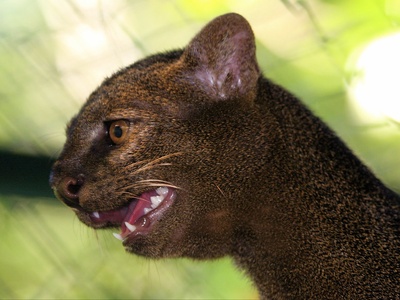
Jaguarundi
A small, slender wild cat with an unspotted coat and otter-like appearance. Despite its name, it is not closely related to the jaguar, being closer to cougars and cheetahs.

Black-backed Jackal
A medium-sized canid identified by the silver-flecked black saddle on its back. It is a highly adaptable omnivore, known for its bold and cunning behavior in various African landscapes.
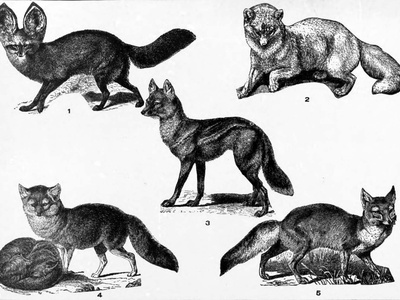
Side-striped Jackal
Named for the indistinct white and black stripe on its flanks. This jackal is less of a predator than its cousins, preferring to scavenge and eat invertebrates, fruits, and small vertebrates.
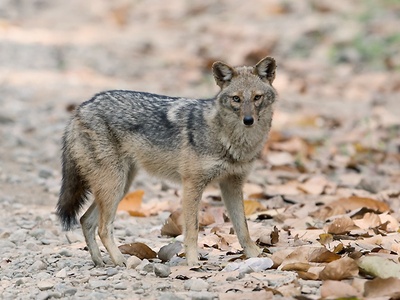
Golden Jackal
A widespread wolf-like canid that thrives in open country. It is an opportunistic omnivore with a varied diet, known for its distinctive and eerie howling, especially at dusk and dawn.

Black-tailed Jackrabbit
A common North American hare known for its incredibly long ears, which help regulate body heat. It can reach speeds of up to 40 miles per hour (64 kph) to escape predators.
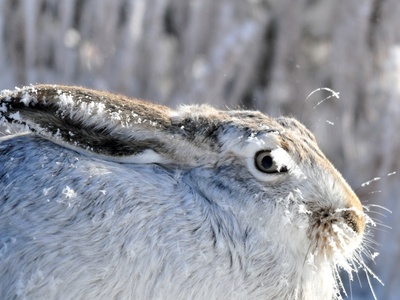
White-tailed Jackrabbit
One of North America’s largest hares, distinguished by its large white tail. Its coat turns pure white in winter for camouflage in snowy environments, a remarkable seasonal adaptation.

Antelope Jackrabbit
A large hare of the American Southwest and Mexico, with enormous ears. It flashes a white patch on its rump when fleeing, much like a pronghorn antelope, which inspired its name.

Javan Rhinoceros
One of the world’s most critically endangered mammals, with only a single known population in Java, Indonesia. It has a single horn and distinctive armor-like skin folds.
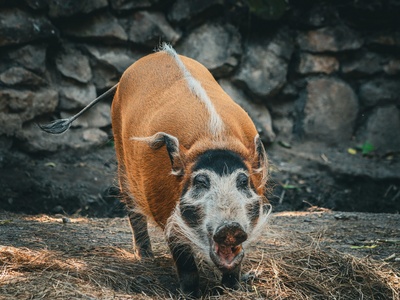
Javan Warty Pig
An endangered wild pig endemic to the Indonesian islands of Java and Bawean. It is named for the three pairs of prominent facial warts present on males.
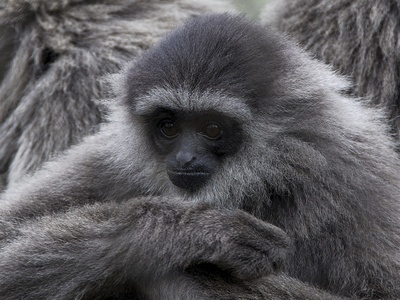
Javan Gibbon
Also known as the silvery gibbon, this endangered primate is found only on the island of Java. It is known for its loud, melodic calls that echo through the rainforest canopy.
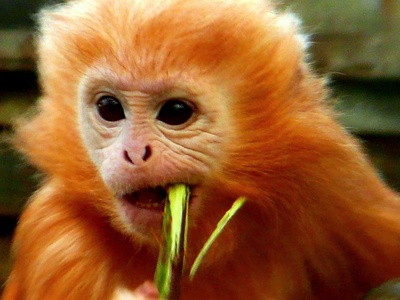
Javan Langur
A primate with two main color phases: a common glossy black and a rarer golden-orange. They are leaf-eating monkeys living in social groups in the forests of Java and nearby islands.
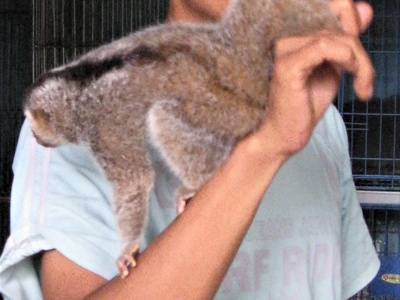
Javan Slow Loris
A critically endangered nocturnal primate with large eyes and a toxic bite, a rare trait among mammals. Its slow, deliberate movements help it hunt insects and avoid predators.
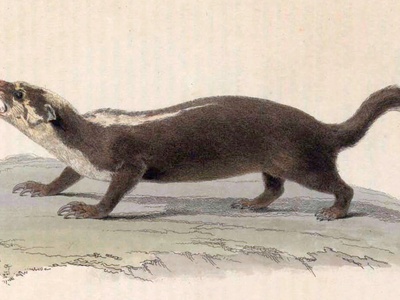
Javan Ferret-badger
A small, nocturnal omnivore native to Java and Bali. It has a distinctive mask-like facial pattern and is an adept climber, often foraging for insects and fruits in trees.
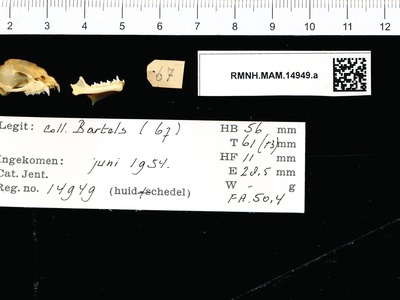
Javan Slit-faced Bat
A bat native to Indonesia, characterized by a deep slit running down its face. It uses this feature to aid in echolocation, allowing it to deftly hunt insects in cluttered environments.

Japanese Macaque
Also known as the snow monkey, this primate is famous for bathing in volcanic hot springs to cope with cold winters. It is the most northerly-living non-human primate.
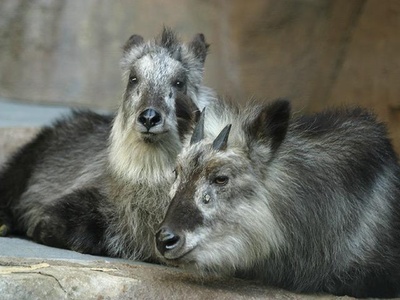
Japanese Serow
A goat-antelope native to Japan’s dense woodlands. Once hunted to near extinction, it is now a national symbol and is protected, known for its sure-footed climbing on rocky cliffs.
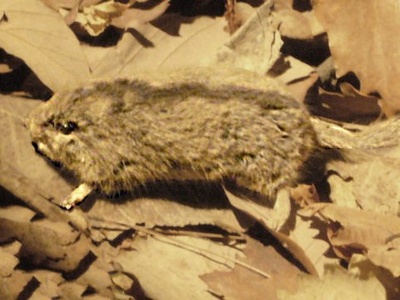
Japanese Dormouse
A tiny, squirrel-like rodent with a dark stripe down its back. It is the only species in its genus and hibernates for up to seven months a year in a nest.
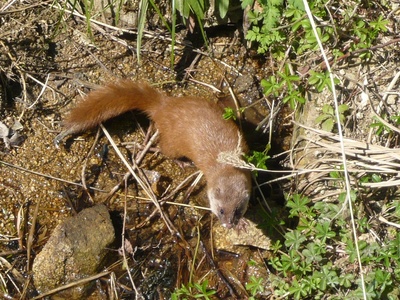
Japanese Weasel
A slender carnivore native to Japan, where it helps control rodent populations. Males are significantly larger than females. It has been introduced to other islands for pest control.
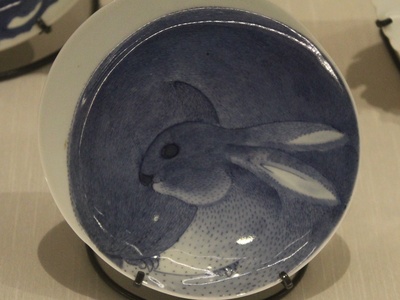
Japanese Hare
A small hare native to the main islands of Japan. Its coat color varies from light brown to dark, reddish-brown, providing camouflage. Unlike many hares, it is primarily a forest dweller.
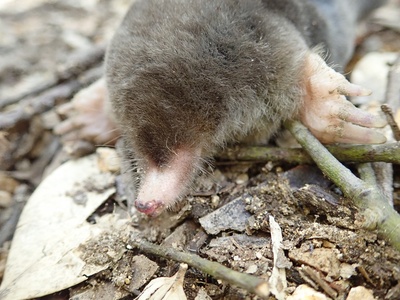
Japanese Mole
A species of mole common in Japan and surrounding regions. It lives an almost entirely subterranean life, creating complex tunnel systems to hunt for earthworms and insects.
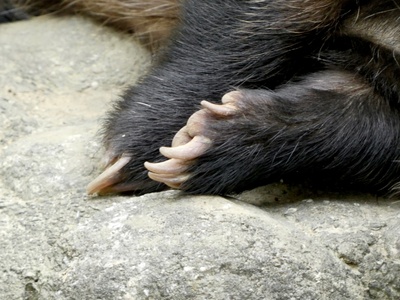
Japanese Badger
Endemic to Japan, this badger is smaller than its European cousin. It is an omnivore with a varied diet and lives in complex underground burrows known as setts.
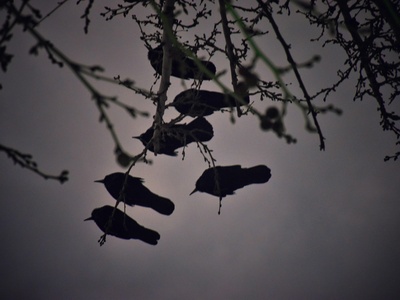
Japanese Pipistrelle
A small species of bat very common throughout East Asia, often found roosting in buildings in urban areas. It is an insectivore, emerging at dusk to hunt for flying insects.
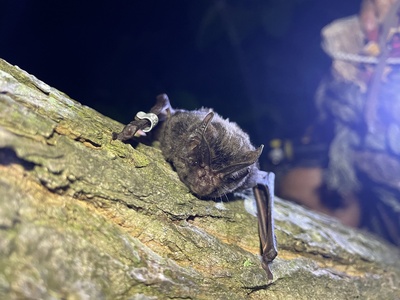
Japanese Barbastelle
A species of vesper bat found only in Japan. It has distinctive, large ears that meet at the forehead and is known for its specialized diet of moths.

Japanese Long-eared Bat
A bat species endemic to Japan, easily recognized by its extremely long ears which can be nearly as long as its body. It is a gleaning insectivore, plucking prey off surfaces.
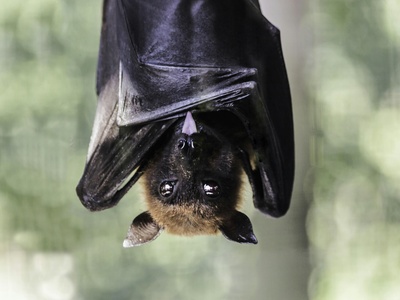
Japanese Large-footed Bat
This bat has unusually large feet with long claws, which it uses to catch small fish and aquatic insects directly from the water’s surface, a technique known as trawling.
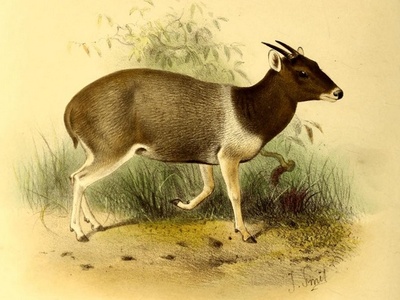
Jentink’s Duiker
A rare and endangered forest antelope with a striking black and white coat. It is one of the largest duiker species and is notoriously shy and difficult to observe in the wild.
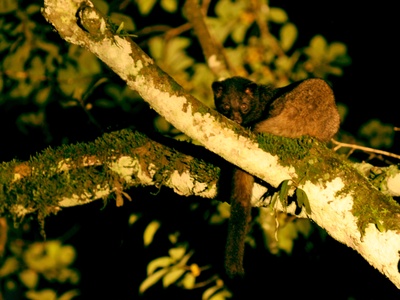
Jerdon’s Palm Civet
A nocturnal, fruit-eating civet found in the Western Ghats of India. It plays an important role as a seed disperser in its montane forest habitat.

Jungle Cat
A long-legged cat well-adapted to wetlands and reed beds, hence its other name, the reed cat. Despite its name, it prefers open habitats over dense jungles.
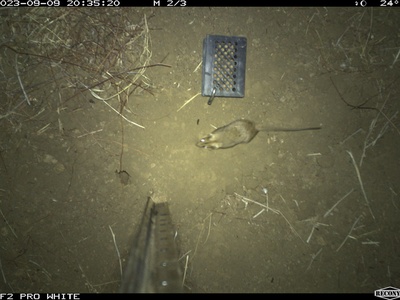
Julia Creek Dunnart
A small, carnivorous marsupial from Australia, once thought to be extinct. It lives in the cracks of drying mudflats and is an endangered species facing threats from habitat change.
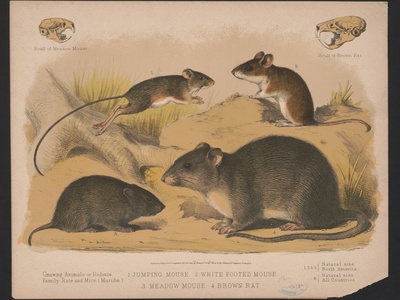
Meadow Jumping Mouse
A small rodent with huge hind feet and a very long tail, allowing it to jump up to 9 feet (2.7 m). It hibernates for more than half the year.

Johnstone’s Vlei Rat
A species of rodent found in high-altitude grasslands and wetlands in Malawi and Zambia. It is a herbivore, feeding mainly on grasses and other green vegetation.
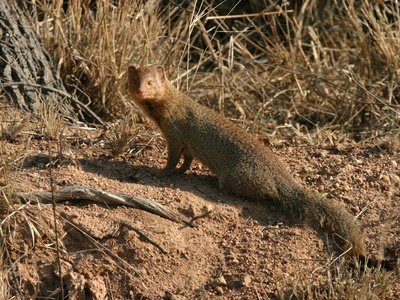
Jackson’s Mongoose
A rare and elusive mongoose species inhabiting mountain forests of Kenya, Tanzania, and Uganda. It is primarily nocturnal and feeds on insects, rodents, and reptiles.

Jameson’s Red Rock Hare
A nocturnal rabbit that lives in rocky hills and outcrops in Southern Africa. It has a reddish-brown coat for camouflage and is known for its agility on rocky terrain.


